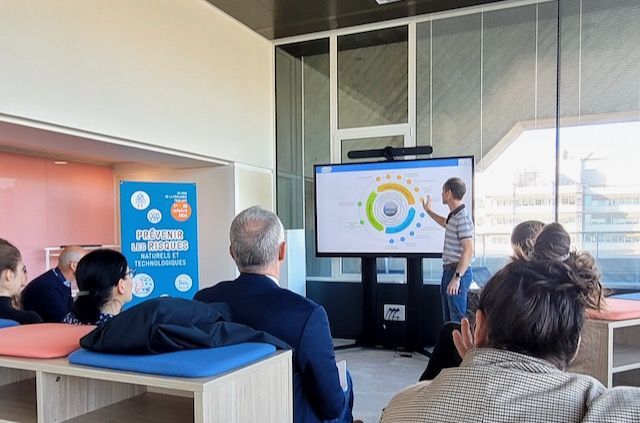A few thoughts on delivering online lectures
The world is facing an extraordinarily challenging time right now, as all countries implement measures to overcome the COVID-19 pandemic (with so many brave people working in healthcare helping humanity in this time of need).
Just one of a great many elements of societal change that we are all quickly having to adjust to is “remote and distance-based working”. As well as the needs of business and commerce, and the public sector, the education sector is part of this change, all around the world.
This blog post focuses on my recent experience in running university lecture programs online, which is something that the higher education sector around the world is adapting to right now, as they implement social distancing measures in the interests of public health and safety whilst continuing to run courses for students.
I am a visiting lecturer at the University of New South Wales (UNSW), in Sydney, Australia. I have managed modules of Masters programs and conducted Undergraduate lectures for a number of years at this university, and I have also run lectures at other universities.
At the time of writing, I am co-running a Masters module for one of the faculties of the UNSW, with a class of about 45 students. Similar to what is happening elsewhere around the world, we are now delivering our lectures, and other course activities, in a wholly online format.
In business continuity management, we often talk about the importance of “being prepared” for unexpected circumstances. As it happens, we were starting to deliver a small number of lectures online for this course last year, as part of a plan to provide multiple options for student learning. This effort has stood us in good stead for being able to rapidly adapt to the change that has been required as a result of COVID-19.
Right now, we are delivering our course module online using Microsoft Teams and Moodle. Here are a few key points that I have found in delivering online lectures. I am always learning myself in ways to improve online delivery, I hasten to add. I hope these points may be of use to people for holding online lectures, and in other situations where, for example, long training sessions in a business environment need to be delivered:
1. Ensure rapport – if you have been able to run face-to-face lectures with your class beforehand, this helps to establish a rapport with your group (in today’s current environment, this is of course not always possible).
2. Use trusted technology – I am using Microsoft Teams as my platform (per the UNSW technology options to me). Other online meeting solutions are available (and being used a lot right now), of course. Ensuring IT security is in place is important – you don’t want your lecture to be “bombed”. For me, I am familiar with using Teams for consulting work, so this is a platform I am comfortable with.
3. Keep the lecture interactive –
a. It’s good to initially start with video open to everyone, to say “hello”. If you have a large class, it is best to ask people to switch off their video after introductions.
b. It can be a good idea to set a good background when you are using your camera (whether in-built in your computer, or an external one). For example, i f you are using the Teams app and if you have the permissions to do so, you can set your “background” to be blurred behind you , or you can insert a background image, which can help to “mix up a bit” your background (similar to how TV newsrooms sometimes approach things).
c. Students are very good at using technology, and they are all good at "being on mute" whilst you run through key lecture points. You do want to ensure that you engage them, of course, just as you would in a face-to-face lecture.
d. Intersperse the lecture with questions, and perhaps short voting polls through your technology platform.
e. Many technology platforms (including Teams) have the option (if you have rights / set it up) of a “ whiteboard function ”; this can help to capture notes, draw elements and sketch examples with your students throughout the lecture.
4. Take some breaks during a long lecture – if your lecture is over 90 minutes in duration, consider splitting it up into sections. For example, breaking at 60 or 90 minutes for a 15-minute “tea break” can be a good idea. I find that people always "return to the virtual class" in a timely fashion when we do this.
5. Record the lecture, if you can –
a. Students may want to watch / listen to the recording of the lecture afterwards to recap on certain points (e.g. to help towards assignments), and therefore it helps if your technology solution has a recording feature.
b. Depending on how recording has been set up, it may be streamed onto a Streaming service (e.g. Teams can stream onto Microsoft Stream ).
Will we see a long-term increase in the online delivery of university lectures in future? This remains to be seen, but one thing we do know is that online services are an important medium for maintaining continuity of services in higher education at the moment.
Regards,
Gareth










